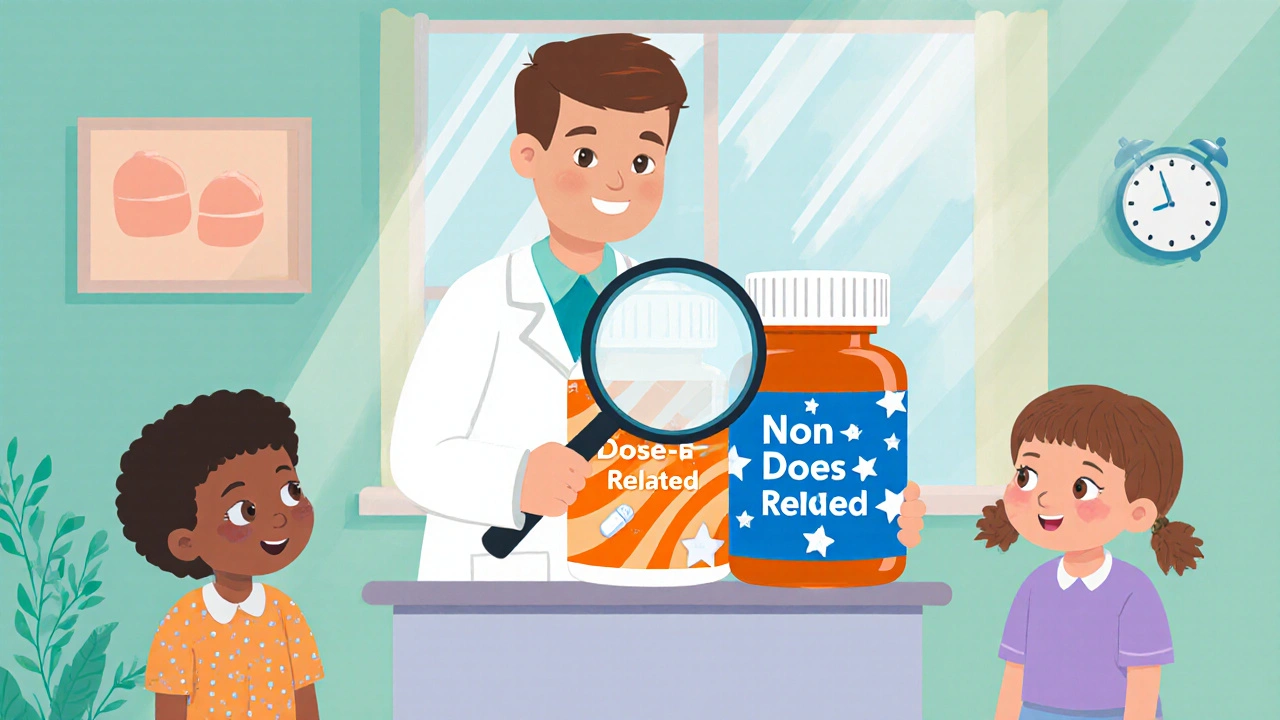Type A Reactions: What They Are, Why They Matter, and How to Spot Them
When your body reacts badly to a medicine you’ve been taking, it’s often a type A reaction, a predictable, dose-dependent adverse drug reaction caused by the known pharmacological properties of the medication. Also known as augmented reactions, these are the most common kind of side effects you’ll ever experience—from dizziness on a blood pressure pill to stomach upset from an antibiotic. Unlike rare, mysterious reactions, type A reactions happen because the drug does exactly what it’s supposed to do—but too much, too fast, or in the wrong person.
These reactions are tied to the pharmacology, the science of how drugs interact with the body’s systems of the medicine itself. For example, if a statin lowers cholesterol by blocking an enzyme, too much of it can cause muscle damage—that’s a type A reaction. Same with antibiotics: too much amoxicillin can lead to diarrhea because it wipes out good gut bacteria. It’s not an allergy. It’s not a glitch. It’s the drug’s normal action, just amplified. That’s why doctors start you on low doses and increase slowly—they’re trying to avoid triggering these predictable responses.
What makes type A reactions tricky is that they’re often mistaken for something else. You might think your headache from a new blood pressure med is stress. Or that your nausea from an antibiotic is just bad luck. But if it started right after you began the drug and gets worse when you take more, it’s likely a type A reaction. The good news? Because they’re predictable, they’re also preventable. Knowing your meds, understanding your dose, and watching for early signs can stop them before they turn serious.
These reactions show up in the most common medications people take daily—statins, antibiotics, painkillers, insulin, even supplements. That’s why every post in this collection focuses on real-world cases: grapefruit making statins dangerous, overusing headache pills leading to rebound pain, or how cheap generic versions can change your body’s response if the dose isn’t right. These aren’t rare edge cases. They’re everyday risks.
There’s no magic trick to avoiding type A reactions, but there’s a simple habit: always ask, "Could this side effect be from the medicine itself?" If the answer is yes, talk to your doctor before stopping. Sometimes a lower dose or different timing fixes it. Other times, switching to a safer alternative is the move—like choosing a different basal insulin or swapping out one antibiotic for another. This collection gives you the facts you need to spot these reactions early, understand why they happen, and make smarter choices without fear or guesswork.
Dose‑Related vs Non‑Dose‑Related Side Effects: Key Pharmacology Differences
Learn the key differences between dose‑related (Type A) and non‑dose‑related (Type B) side effects, how they affect treatment decisions, and practical steps for clinicians.
View More
